When the compact disc was launched, consumers not only had to contend with a brend new audio format, but also with a new and radical style of packaging. The familiar cardboard and paper sleeves used by LPs and seven-inch singles were replaced by a clear plastic case know as a CD Jewel Box.
Today, the transparent plastics box can be found in hundreds of millions of households across the globe, but its story begins in Germany in 1981, where designers at Polygram Records were trying to devise the packaging for a new 12cm digital audio disc.
Philips also owned PolyGram at the time, which is why its designers were given first go at developing the packaging.
Hermann Grobecker Polygram
Among the team of designers and engineers who worked no the design project was Hermann Grobecker, now senior engineer at the Universal Technical Support Centre in Germany. "The CD was smaller than a vinal album and yet had a greater capactiy and sound quality, so a totally new package had to be invented," he says. Many ideas were discussed, samples were evaluated, tested and rejected. The design team worked with cardboard, wood, plastic and glass and some promising ideas were rejected because of problems with mass production.
Peter Doodson
The PolyGram team hit a brick wall and so decided to contact the Philips design centre in Eindhoven for help. One of the Philips' team, an Englishman named Peter Doodson, was given the job of designing the CD packaging. Doodson seemed like an unusual choise for the project, because he was not a packaging designer, but an industrial designer. "However, I had been working on designs for dictation pocket memos and in-ear hearing aids, so my boss thought I'd be a suitable choice for working with the CD, which was also small and required special packaging," says Doodson.
'A jewel of an idea'
From the 2002 Philips archive
How many designers can look back on their life and genuinely claim that their work sold in the billions? And still is, 20 years later? Well, packaging designer Peter Doodson is one who can.
And even though the modest Englishman recently retired, he will be able to enjoy his work for decades to come. The story goes back to 1981 when he was presented with the soon-to-be-launched CD, and asked to come up with the packaging. "They had paper sleeves, but asked us to come up with other ideas," recalls Doodson today. That brief included keeping the disc flat and preventing scratches, and enhancing the hi-tech appeal of the new music carrier. Doodson's answer, like all the best designs, was simple yet effective: a case made of clear plastic, with tabs to hold artwork and sleeve notes, and a tray for the CD.
In the months following the launch of the CD in 1982, Doodson refined his design, rounding the edges, adding a clamp to hold the disc and ribbing to the top and bottom of the case. "I specified polished ribs as they pick up the light and shine, making it even more hi-tech." It was the final touch, earning the nickname 'jewel case' for this now perfect - and ubiquitous - example of the packaging designer's art.
The PolyGram team gave Doodson some design concepts to work on. For instance, the ideal packaging shouldn't be much bigger than the CD itself, have space for a booklet and should also protect the tiny disch from damage.
Doodson says the initial inspiration for the jewel box was the packaging used by the compact cassette. He says, "It has always struck me as being a low-cost, elegant solution and that's what I wanted for the compact disc." Doodson's design consisted of a three-piece package made of polystyrene, with a hinged top and a plastic tray that held the disc in place with a central hub. One big problem was the cost of the packaging. Doodson had been given a target budget of one Dutch guilder for the package, but the final cost was 15 cents. So Doodson had to go and see Jan Timmer (later head of PolyGram and Philips) to get the go-ahead for his design. Timmer said yeas and the rest is history.
Doodson is quick to acknowledge the role of Grobecker, whose job was to convert Doodson's design into a injection-moulded product - Gobecker created the master drawings that were used by manufacturers to produce the jewel box. In spring 1982, Doodson, Grobecker and others gathered at a factory in Hanover to see the first CD jewel boxes come off the lines and CD packaging was born.
However, the jewwel case was not universally welcomed when it arrived. Some people complained that it was difficult to open (one way descibed it "like opening an oyster"). "The problem was that the jewel box is looked at the edfe and people often trued to pull it open from the middle," says Doodson. "This had the effect of making the lock even tighter."
Consumer education helped solve this issue. In the US, the jewel box was considered too small for display purposes, so another form of packaging - the Long Box - was developed. This saw the CD jewel box placed inside a large cardboard box, a practive that remained in vogue until well into the Nineties.
In the Eighties, 8cm CD singles appeared, which used a simpler two-piece jewel box, but the 8cm single soon was replaced by the standard 12cm single in most territories. Around eight years after the CD's launch, the first transparent CD jewel boxes started to appear. These replaced the grey finger grip panel on the left-hand side with a smooth, clear one. "The use of transparency gave the jewel box a new lease of life because graphpic designers could create depth effetcs and the front art work could continue through to the lower rear paper insert," says Doodson.
The 'Jewel Case'
From the 2015 Philips archive
When the technical development of the Compact Disc was virtually completed in 1981, the packaging and marketing activities were started. And since the CD was a totally different product from the LP, a completely new packaging had to be designed. Numerous ideas were considered; samples were made, discussed, tested and rejected. It was difficult to find the 'ideal' packaging, because consumer acceptance would be a decisive factor when the CD was introduced. Some designs at first looked promising, but proved to be unusable because of problems in mass production.
Because of its sensitive surface, it was necessary to package the CD in such a way that it would be fully protected against damage. The package also had to provide space for a booklet, and of course automatic assembly was another important requirement.
Product development teams at PolyGram in Germany and the Netherlands worked intensively to find a solution. Glass, wood, plastic and many other materials were tried, but none of them met all the demands. The designers themselves had decided that the ideal packaging should not be much thicker than the CD itself, and it also had to present the consumer with the image of a state-of-the-art product. Price was another important factor, because the packaging had to be affordable. In other words, it was clear that the switch from LP to CD was nothing less than another industrial revolution!
Peter Doodson, working for the Philips Design in Eindhoven was therefore asked to come up with some new ideas. This led to a three-piece package made of plastic (polystyrene). Samples were made and everyone involved in the project reacted with enthusiasm. The next step was to transform the idea into a form that was suitable for mass production, which meant that tools were for production by means of injection molding. One problem arising at that time was how the tool for the tray, with its center clamping of the disc, had to be designed, because injection molding technology still had many limitations at that time. The process was tested, modified and tested again and again until it worked.
The moment of truth arrived when the first samples were taken out of the injection-molding machine. But the product proved to be virtually perfect, which gave rise to the name 'Jewel Case'! However not everyone was so positive about the new and untried Jewel Case. Tests by consumer panels revealed that not everyone knew immediately how to open the case. And the more firmly it was held, the more difficult it became to open it. The only solution was to teach consumers how to do it. Which helped, because after a few months the complaints disappeared.
Numerous variants of the Jewel Case have been designed during the last twenty years. Containing single and double trays, transparent and colored trays, rotating trays and even trays with raised spindles. But the original Jewel Case remained the world standard for the packaging of CDs. Many billions of cases have been produced since 1982, and recently output has even reached as many as eight billion a year!
At first the Jewel Case weighed 100 grams, had thick walls and didn’t break. However, due to severe competition manufacturers reduced its weight to 68 grams. As a result easy breakage became synonymous for the Jewel Case. After the introduction of DVD, which required a different center hub, Philips decided to completely redesign the Jewel Case and named it Super Jewel Box. This Super Jewel box is now mainly used for SACS discs.
![Peter Doodson CD Jewel Box]() The Compact Disc has a diameter of only 12cm. The disc is packed in a 'de luxe' case, which also contains programme information
The Compact Disc has a diameter of only 12cm. The disc is packed in a 'de luxe' case, which also contains programme information
In the early Nineties, the first serious competitor to the jewel box arrived in the form of AGI's Digipack. The Digipak used a board and glued plastic tray. AGI group director for special packaging Andrew Prewett says, "It was orinigally designed as a low-cost packaging for posting promotional CDs to US radio stations."
AGI head of music packaging Bob Barnes says, "You can get so many variations with a Digitpak. It's very versatile packaging and in our view, a more personalised product than the jewel case." One of AGI's first digitpak projects was the Bob Marley Legend album.
Around the same time, the Belgian company Carthuplas launched iets Brilliant Box, which used a cleverly-designed hinged tray to store two CDs in a standard-sized jewel case. Carthuplas vice president Flip Lammerant, who als worked on the Brilliant Box, says, "It was the right product at the right time, especially in Europe, where two-disc compilation albums in Europe, where two-disc compilation albums were becoming very popular - there was a big market demand for our type of product."
In 1993, the Pet Shop Boys changed the face of the CD packaging once more with the launch of their Very album. EMI senior director of packaging Graham Crawshaw, who was involved in the project, says, "The original concept by Mark Farrow, the Pet Shop Boys' designer, was for a bright purple box with lego-type bricks. So I rand Des George (owner of Add-Y-Pac) and said 'Des, we've got this crazy idea...'". Des George, takes up the story, "I said we could do it but when I pointed out the cost and the logistics, they decided to opt for an orange box with dimples all over it. When you made the packaging, you had to ensure that every dimple was underneath the suckers used on the packaging machines."
Crawshaw also worked on the 1995 Pink Floyd album Pulse, which had a flashin LED built into the spine of a box. "Floyd designer Storm Thorgerson called me and said that the band wanted a package that spoke to you." recalls Crawshaw, who adds that the resulting package involved 26 sub-contractors and took 76 man-years to develop.
Today, a bewildering variety of CD packaging is available, such as Shorepak's Q-pack, a tough plastic case. Shorewood Packaging's sales and marketing director Tim Vemon-Dier says, "It's more robust than a jewel box and can be posted."
Doodson and Grobecker were also involved in the development of what some see as the ultimate successor to the jewel box, the Super Jewel Box. The new package, designed for CDs and DVDs, has the same dimensions as the standard jewel box but includes new features like rounded edges, a display area on all four spines and an improved clamp and hinges. The Super Jewel Box project was taken over by local Dutch entrepreneur Jan Schuurs and the first Super Jewel Box product was launched in 2000. 2002 saw the arrival of the Super Jewel Box New Standard, which includes a new locking mechanism.
Doodson retired from Philips, although he still takes a keen interest in CD packaging. "Even after 20 years, the jewel box remains the standard CD packaging - it's been very difficult to replace, partly because of the low cost of production," he says. "It's also inspired a hugo CD furniture industry. And I still get a buzz whenever I walk around a music store and see racks and racks of jewel boxes."
Peter Doodson passed away in September 2022.
Some facts about the jewel box
-
PolyGram initially thought of housing CDs in miniature-style LP cardboard sleeves. Another idea was a wooden box. The company believed that CDs wouid only appeal to audiophiles and thus sell in smail numbers - hence thc idea of using luxurious cigar box-type packaging.
-
In Japan in 1996, Sony Music Entertainment revived the idea of miniature cardboard sieeves and used them on its limited-edition Master Sound series of CDs, which featured artists from Miles Davis to Roxy Music.
-
Philips allowed manufacturers to produce jewel boxes for virtually nothing, which helped boost production and bring down costs.
-
Philips hoids the patents on the jewel box's overall dimensions. However, over the years, some manufacturers have used thinner plastic to reduce weight.
-
Philips does not hold the patent on the disc clamp, hence the variety of clamping systems on the market. Peter Doodson, who designed the jewel box, originally wanted the clamp to have 12 fingers but was told that only eight were feasible. Japanese manufacturers soon managed to produce clamps with 12 fingers.
-
The disc clamps in the early jewel boxes had a habit of breaking, but improved plastics largely solved this problem.
-
The tabs holding the CD booklet in place have two little dimples while others have two ribs.
-
The origin of the jewel box name has been lost in the mists of time, but one story has it that a PolyGram director felt that because of the CD's jewel-Iike appearance, it should be treated like a piece of jewellery and put into an appropriate box.
-
One of the design tweaks Peter Doodson made was to put a ribbed effect on the top spine of the jewel box so that it caught the light when dispiayed in a store.
-
The original jewel box tray was grey so that it wouldn't clash with artwork.
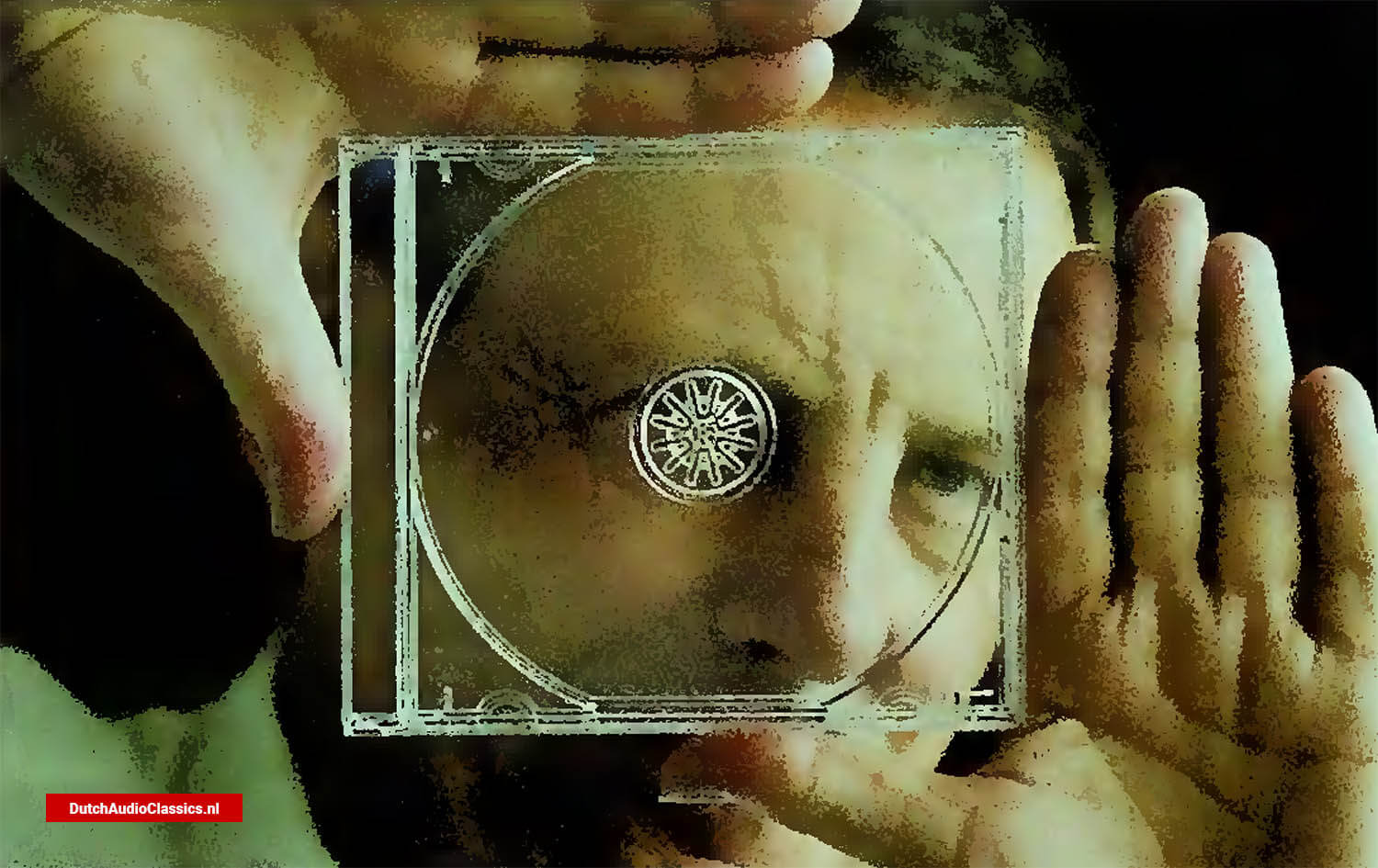 Peter Doodson, designer of the CD jewel box
Peter Doodson, designer of the CD jewel box
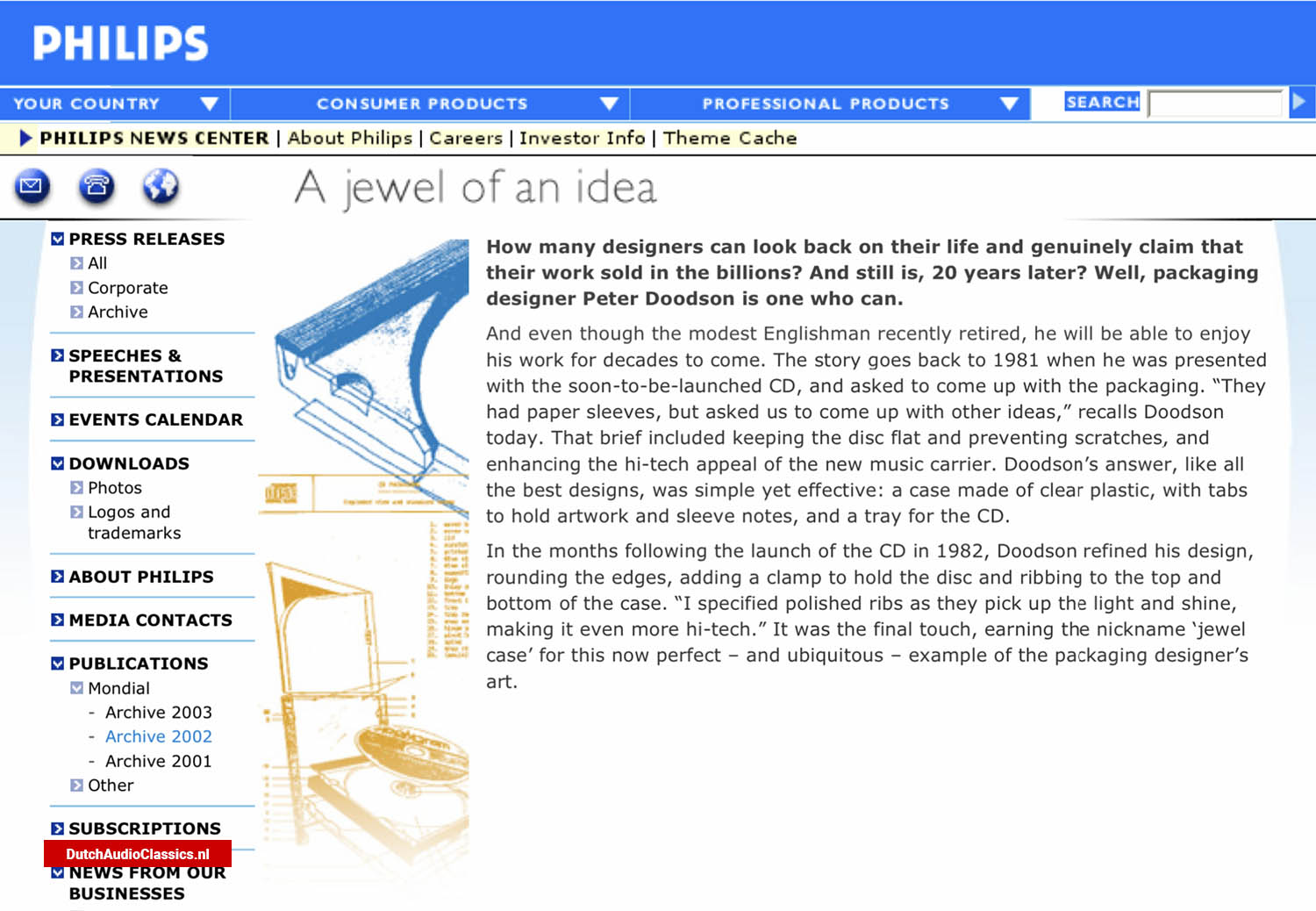
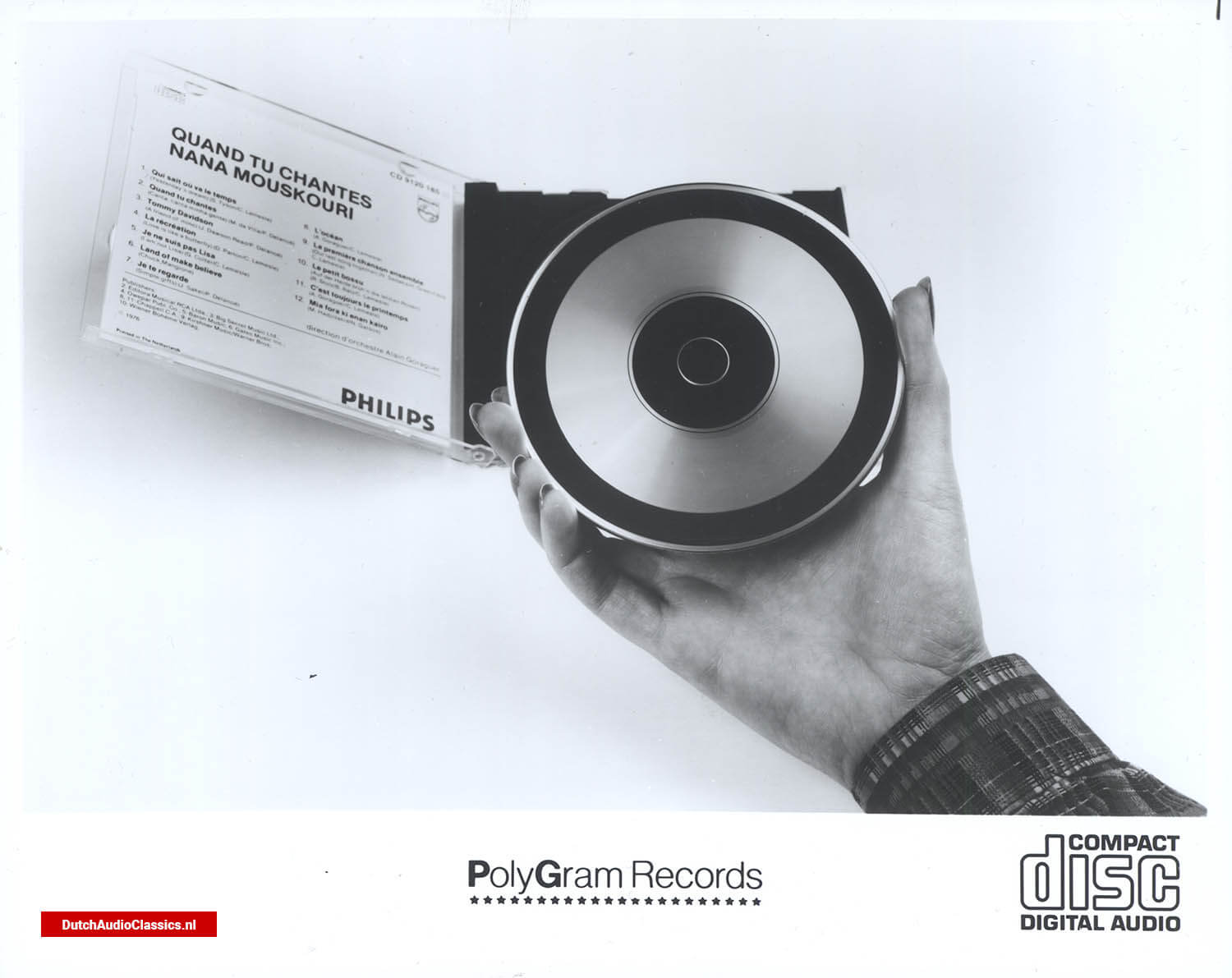
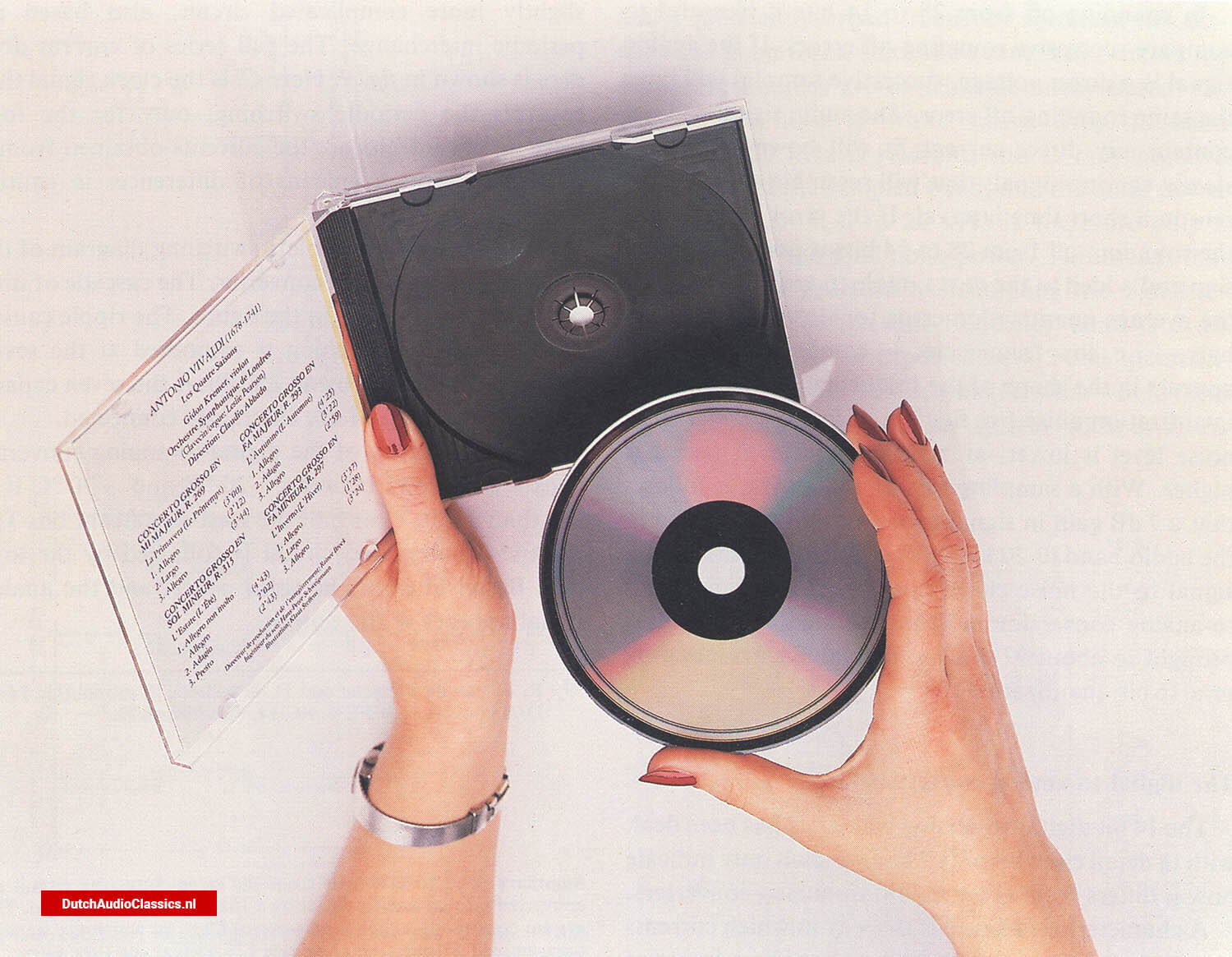
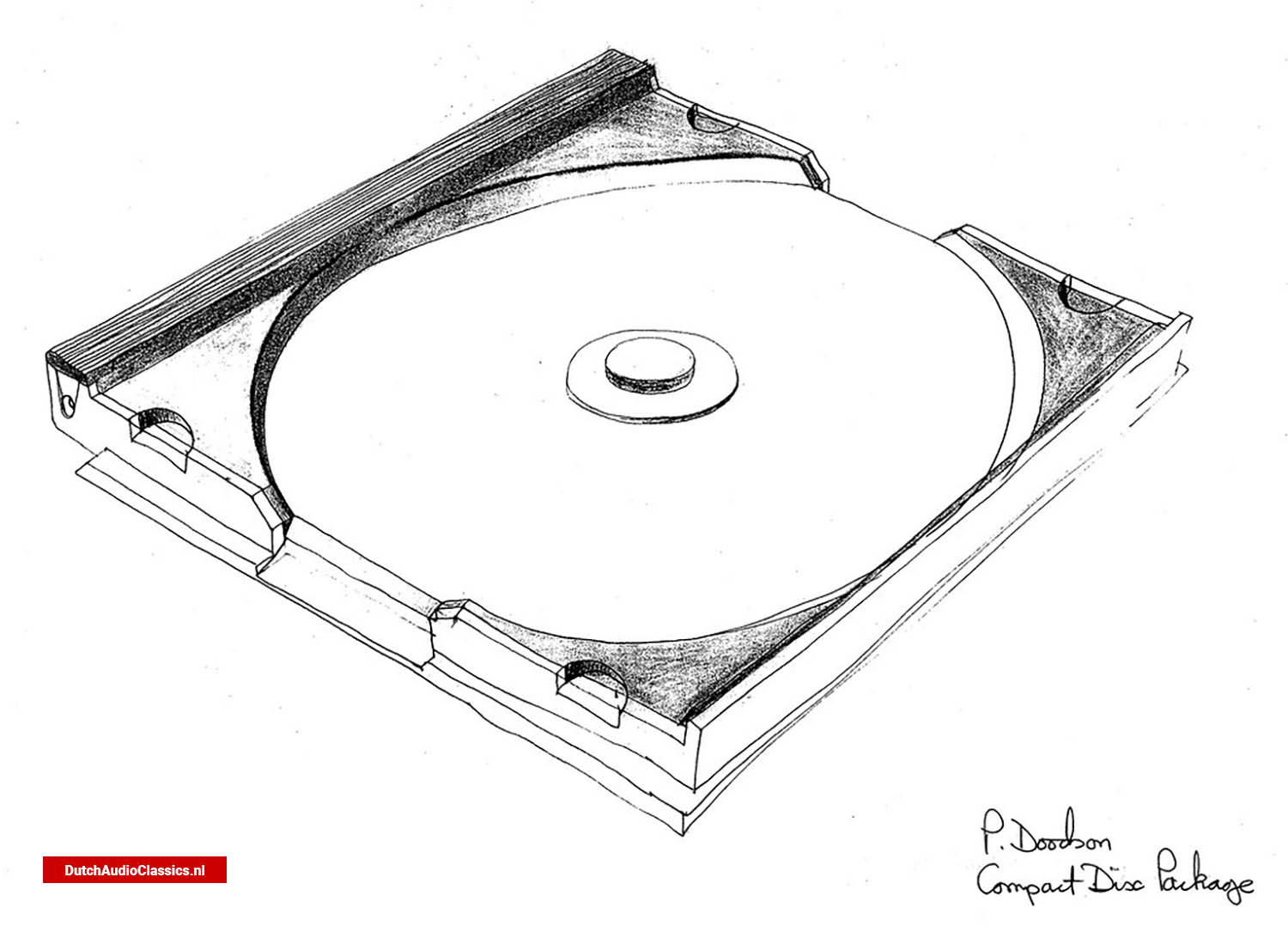 Sketch of the Jewel Box by Peter Doodson
Sketch of the Jewel Box by Peter Doodson